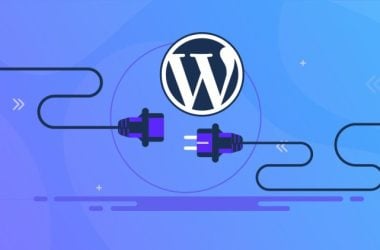Successful link building is a crucial aspect of search engine optimization that revolves around obtaining links from other domains. It plays a significant role in determining rankings in Google’s organic search results. The primary objective is to enhance a website’s visibility in search engines, leading to increased website traffic and backlinks.
So, what exactly is effective link building?
Link building refers to the process of acquiring one-way hyperlinks, also known as backlinks, pointing to your website. The aim is to enhance the website’s presence in search engine results. Essentially, it involves placing a clickable link on a webpage, which, when clicked, directs users to your website and contains content that aligns with SEO best practices.
However, obtaining valuable links is no easy feat. Identifying websites that offer genuine value through linking requires a significant time and effort investment. Although it may be tempting to pursue a high volume of links from low-quality sources, adopting more effective backlink strategies is advisable. Link building services can help you get strategic backlinks that improve your website’s search engine rankings.
Why is effective link-building important?
Many people question the relevance and value of acquiring links from other websites. They wonder if it’s worth the time and effort. Well, let me tell you, successful link-building holds immense significance.
When other content creators include links to your website on their pages, it not only boosts the authority of your domain but also indirectly improves your website’s ranking in Google’s organic search results. And what does that mean for you? More traffic, more customers, and ultimately, higher profits.
It’s important to note that not all links are created equal. Each search engine has its parameters to assess the value of a link. One such parameter is PageRank, which considers the association with high-authority pages.
Building links is undoubtedly a challenging task that demands time and expertise. However, engaging in successful link-building offers several compelling reasons to embark on this journey:
- Building trust with search engine algorithms;
- Improved search result positions;
- Faster indexing of new pages;
- Source of new traffic.
Implementing effective backlink strategies increase your chances of ranking among the top three search results, resulting in improved visibility, credibility, and overall success for your website.

White Hat, Black Hat, and Grey Hat: Understanding Different Backlink Strategies and Tactics
When you delve into the world of link building, you’ll often encounter the terms “white hat,” “black hat,” and “grey hat” tactics. But what exactly do these terms mean, and how do they impact the positioning of your website? Let’s dive deeper into each of these approaches!
White Hat SEO
White hat tactics involve optimizing websites following search engine guidelines. These actions prioritize ethical SEO practices, sustainable visibility in search results, and website optimization for an enhanced user experience (UX). By following white hat techniques, you can ensure that your website aligns with search engine standards and reduce the risk of penalties.
One of the most effective White Hat SEO strategies is ensuring a high-performance, fast, and SEO-optimized hosting server. For your business, the best solution would be a private virtual server. It is important that it is equipped with NVMe SSD drives, as this is the only way to achieve fast page loading speed, which will positively impact SEO ranking.
Black Hat SEO
Black hat tactics aim for quick results in website positioning, often at the expense of long-term success. These practices involve violating search engine guidelines and employing manipulative backlink strategies to deceive search engines.
It’s important to note that using black hat techniques can lead to penalties, including your website being penalized or even blocked from search results.
Grey Hat SEO
Grey hat SEO is a blend of both white hat and black hat tactics. These practices exploit loopholes or ambiguities in search engine guidelines to engage in minor manipulation of search results. However, it’s crucial to recognize that the distinction between grey and black hat practices is often quite blurry.
In many cases, grey hat tactics can backfire. Sometimes, search engines may even treat certain grey hat practices as black hat without prior warning, leading to penalties or loss of visibility.
It’s crucial to approach link-building with caution and prioritize white hat strategies. By following ethical practices, adhering to search engine guidelines, and focusing on long-term results, you can build a solid and sustainable online presence while mitigating the risks associated with black hat or grey hat tactics.
The Key Elements of Successful Link Building
Link-building quality trumps quantity in the eyes of Google algorithms. Acquiring one high-quality link can have a much greater impact on your website’s positioning than obtaining multiple weaker ones. To create an effective link-building strategy, focus on the following key elements:
Contextual Links
They directly relate to the topic of a specific article. These links blend harmoniously with the content, enticing readers to navigate to another website. Additionally, they signal search engines the presence of a valuable page at the other end. To illustrate, a link to Remote’s California hiring guide would be contextual within an article about starting a business in the Golden State. But a link to a guide to the best TVs for small rooms? This bears little relevance in the context of the same article.
Dofollow and Nofollow Links
Not all links are treated equally by Google algorithms. The anchor tag can have an optional attribute called “rel,” which provides additional information about the link.
The rel=”nofollow” attribute instructs search engine robots not to follow the link. However, Google considers this attribute more as a suggestion rather than a strict directive. Therefore, crawling or indexing robots can use some links marked as nofollow.
According to Google, links obtained through sponsorships, paid agreements, or advertising should be marked with the rel=”sponsored” attribute.
The rel=”UGC” attribute signifies links generated by users, such as those found in comment sections or internet forums. Its purpose is to combat mass spamming on blogs and forums.
If the <a> tag doesn’t have a rel attribute, search engine robots can follow the link without any obstacles. They are highly valuable for SEO, and obtaining them from reputable websites should be a primary objective in your backlinks strategies.
By focusing on contextual links and understanding the nuances of dofollow, nofollow, sponsored, and UGC links, you can develop a strong link profile that enhances your website’s visibility and authority in search engine rankings.
Emphasize Links from Unique Referring Domains
It’s important to note that a natural and diverse link profile should include links from various unique referring domains, comprising both dofollow and nofollow links. Acquiring links solely within a single domain should be avoided.
Gaining links from websites that are thematically relevant to your own is a crucial aspect of a successful link-building strategy. These links assist search algorithms in properly categorizing your page and also attract new customers or readers interested in the specific topic.

There’s no restriction on acquiring multiple links from a single domain. For instance, you can create a series of expert articles that cover intriguing subjects, thereby building your link profile and establishing yourself as an authority in the field.
Utilizing Anchor Texts
Anchor text plays a crucial role in hyperlinking, as it serves as the clickable text connecting one webpage (A) to another (B). It provides Google’s robots with valuable information about the topic of the linked page.
Proper utilization of anchor text can impact search rankings, as Google’s algorithm takes it into account (along with alternative text or alt for images) to comprehend the content of the linked page. Avoid excessive use of anchor text, as it can be seen as spam by the algorithm and disregarded. Maintain a natural mix in your link profile, avoiding an abundance of links.
Various industries have their practices, and specific topics may have a substantial portion of their link profile comprised of exact match anchors. Hence, it is valuable to analyze the link profiles of your competitors before taking any action. This analysis will help you determine the suitable approach and construct an effective link-building strategy.
Types of Anchor Texts:
- Exact Match: It refers to a keyword phrase that precisely aligns with the page’s optimization. However, it is important to use this option judiciously to avoid potential penalties from Google.
- Partial Match: Involves a modified or expanded keyword phrase. This option is safer for creating anchors, as it appears more natural.
- URL Address: Commonly used to provide a direct link to the page, using the URL as the anchor text.
- Brand Anchor: Used to build brand recognition, with the anchor text containing the brand’s name. It may also include the company’s domain name.
- Zero Match: Primarily aims to encourage users to take a specific action. The anchor text doesn’t include a keyword phrase. Examples of such anchors include “Click here,” “Here,” and similar variations.
Crafting an Effective Link Building Strategy
Crafting an Effective Link Building Strategy
First and foremost, understand the distinction between tactics and strategy. Novo marketing philosophies often emphasize this separation, where strategy refers to the overarching, long-term plan that outlines what you aim to achieve. On the other hand, tactics outline how you plan to accomplish your goals.
When it comes to your website, there are various tactics you can employ. However, it’s essential to consider the level of effort required for each tactic. Continuing with the same industry example, exploring the services offered by SaaS content marketing agencies or partnering with a SaaS link-building agency like Outreach Desk is one of the most effective tactics. If you have a limited budget, prioritize the tactics offering the greatest benefits and start implementing them.
While exploring new and innovative tactics is valuable, it’s equally crucial not to overlook traditional solutions that continue to deliver positive results in Website positioning. Check the article about the most significant backlinks strategies.
Broken Link Building
This tactic involves identifying websites in your industry that have broken outgoing links. Reach out to the site administrator to inform them about the broken link. Additionally, you can suggest replacing the broken link with a link that directs to relevant content on your website.
One efficient method to discover broken links is by monitoring your competitors’ backlink profiles. You can use tools like Ahrefs’ “Broken Links” feature.
Optimizing Internal Links
Internal linking is one of the simplest, most effective, and underestimated link-building tactics. It involves connecting pages within your website and creating a network of interconnected pages that support each other in the process of improving their search engine rankings. When crafting new articles for your blog, it’s beneficial to provide links to relevant older posts.
The effectiveness of this strategy will largely depend on the speed of your hosting. Therefore, make sure that your blog is hosted on the most efficient hosting for WordPress.
Submitting Reviews in Exchange for Backlinks
Reach out to the companies you currently collaborate with, such as the tools you use, vendors, suppliers, or programs, and propose leaving a review or feedback in exchange for a backlink. Many companies are open to such link exchange arrangements, as a positive review or feedback can help them attract new customers.
Links on Business and Supplier Websites
This tactic is particularly useful for retailers. It involves securing links from the websites of the brands or suppliers whose products you sell. Typically, these are well-established websites with a large audience and high Page Rank. If they have a distributor list, ask them to include your company.
Conclusion
Link building is undoubtedly a challenging task. It requires time and investment and entails some risks. However, it is an indispensable element if you want to compete for top positions in search engine results. By implementing successful link-building strategies, you can improve your search engine rankings, drive more traffic to your website, and ultimately, enhance your profitability.
Best of luck in acquiring new links!
Do you want to increase your chances in successful link building? Buy VPS optimized for SEO and create a basic link portfolio on your own! Get 24/7 support from our support team. Our powered infrastructure focuses on auto-scaling, performance, and security. Let us show you the difference! Check out our plans!










